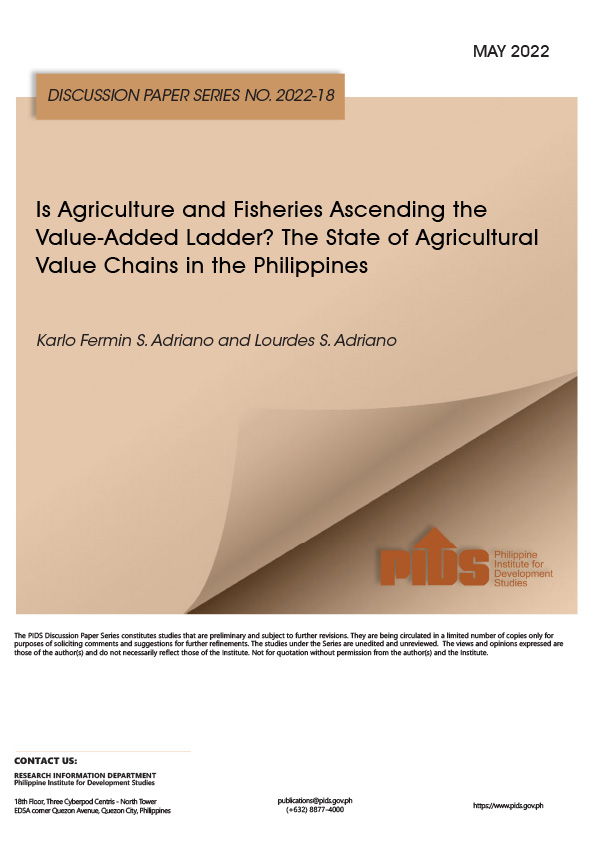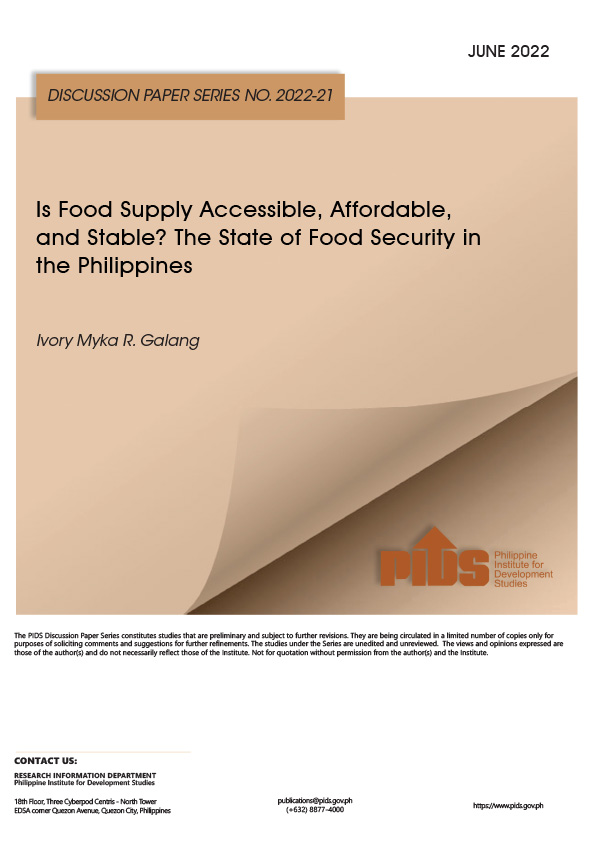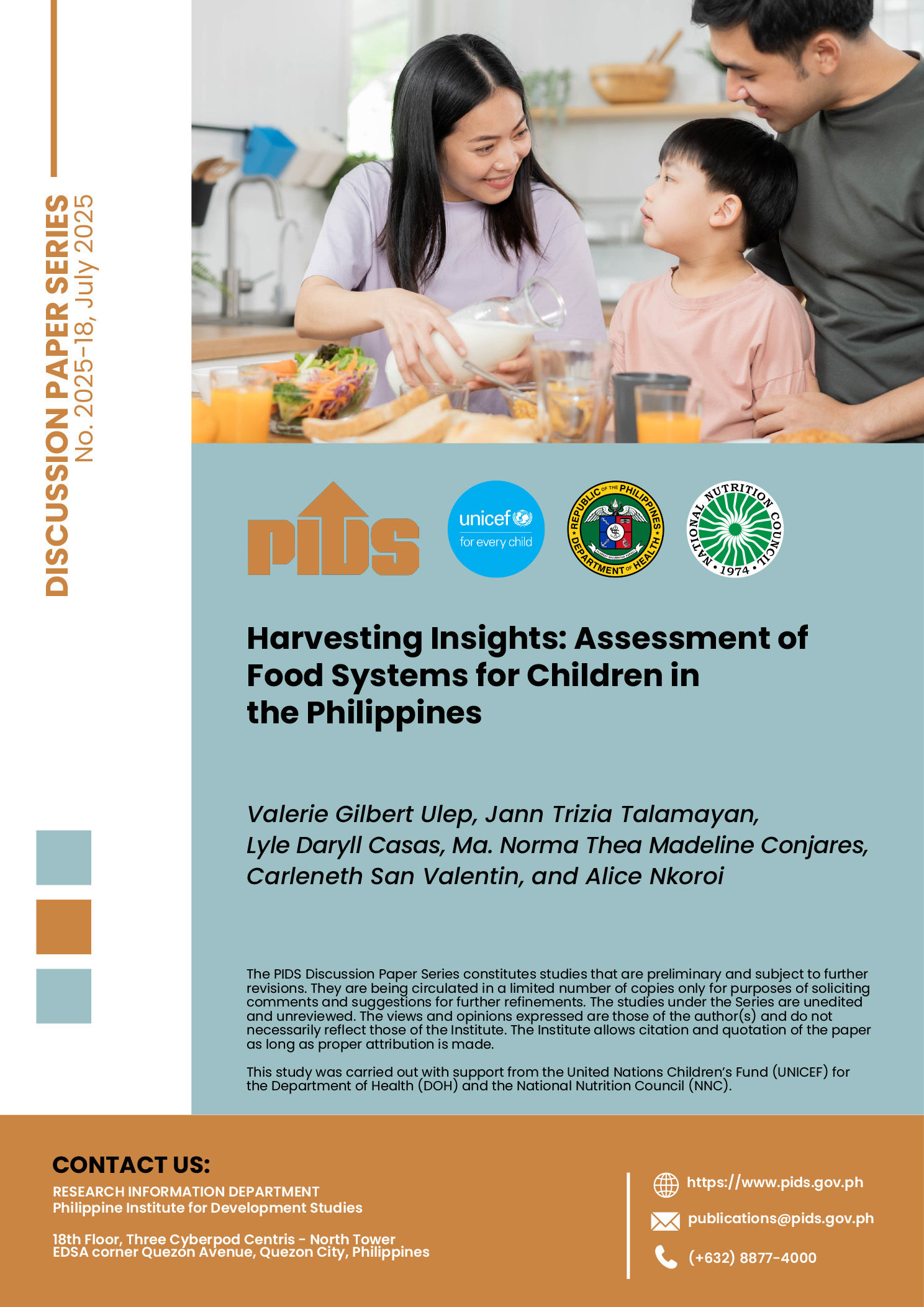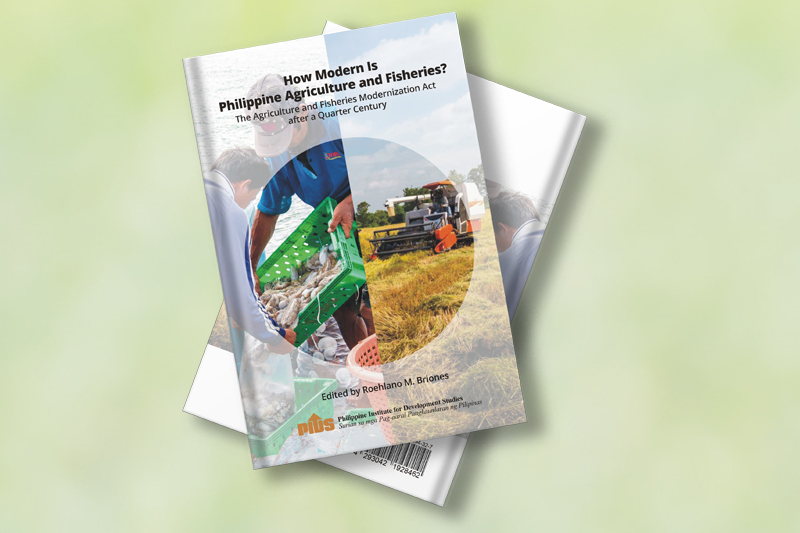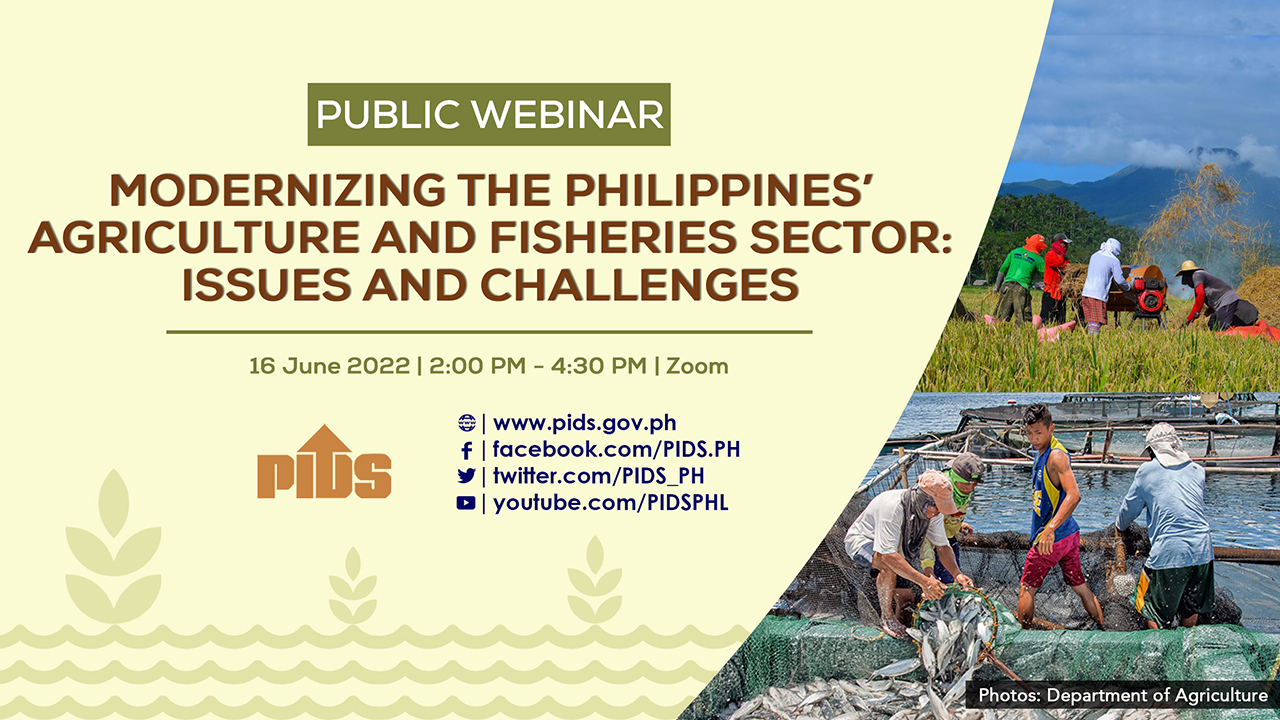The Agriculture and Fisheries Modernization Act (AFMA) was passed and implemented a quarter of a century ago. AFMA comprised a suite of policy, institutional, and investment measures that envisaged the transformation of the agriculture and fisheries sectors, from a resource-based to a technology-based industry. One aspect of the modernization process that the AFMA is aiming at and which is the focus of this study is the development of agro-based value chains that move up the value-added ladder ascendancy. This is done by examining AFMA and the agri-food value chain development and ascendancy in the value-added ladder from the lens of the agri-food systems approach and theory of change. In addition to this, value chain case studies of selected agricultural commodities were conducted.
Unfortunately, the impact of AFMA on the modernization of the agri-food value chain systems more than twenty years after its enactment is mute. There are several factors why AFMA’s role to the ascendancy in the value-added ladder of the agri-food is limited: its narrow view of value-added ladder ascendancy, its focus was mainly on just one segment of agro-based value chains, its rice self-sufficiency position impeded the growth of other agro-based value chains, and its beneficiaries were mainly for small-scale farmers and fisherfolk.
There are five worthwhile areas of AFMA intervention that need expanding for enhanced value-added ladder ascendancy. These are the market-determined credit facilities and the food safety and quality standards. The first expands the credit outreach to the often-disadvantaged rural producers while serving as a vehicle or catalyst for strengthening the links between primary agriculture production, and the backward and forward links to the final consumer markets. The second deals with developing competitive agri-based commodities and products that are consumer safe and are of an internationally acceptable quality which can facilitate the modernization of traditional retail markets. The third is the promotion of clustering of small farmers into formal groups which can facilitate the efficient coordination, transfer, and adoption of government interventions or programs. The fourth is the inclusion of ICT market-related advancements given the new normal. Finally, the fifth entails the transition of AFMA from a supply- or commodity-driven approach to the adoption of a holistic food system framework.
Finally, there is equally a need for policy measures that go beyond the present AFMA jurisdiction. Germane reforms are on the: Comprehensive Agrarian Reform and the need to phase it out and ensure a freer land market, more novel public-private partnerships that bring in the largely numerous micro and small and medium enterprises that dominate the midstream and downstream segments of the value chains, the need to overhaul the DA’s “banner programs” away from rice to diversified farming systems and value chains, and the need to move DA’s budget away from the provision of private goods to public goods.
Comments to this paper are welcome within 60 days from the date of posting. Email publications@pids.gov.ph

